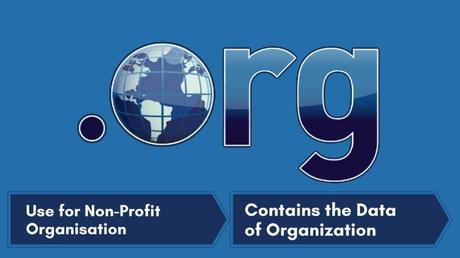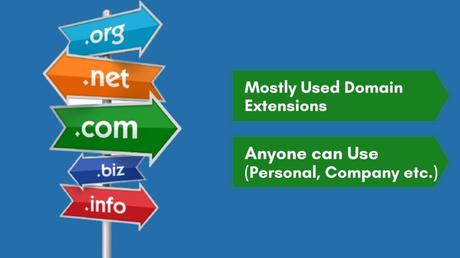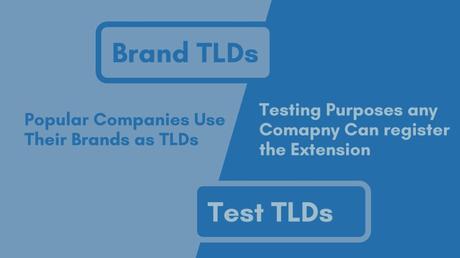In this modern era, any organization needs to make its mark on the internet. The best way to reach the audience through the internet is to create an attractive website. For any website URL to be fully qualified, it must end with the Top Level Domain(TLD).
In this blog, we will discuss what a TLD is. We will also answer questions like what is the purpose of a TLD? and what are the advantages of TLD?
What is TLD(Top Level Domain)?
The top-Level domain is generally abbreviated as TLD. It is the rightmost part of a website’s internet address. It is the text that comes after the final dot in the domain name. An internet address only gets fully qualified when there is TLD associated with it. It can be helpful in many ways for the site visitor and the organization that runs the website.
Consider the URL flickmax.com. In this example, ‘FlickMax’ is the subdomain, whereas ‘.com’ is the Top-Level Domain. Although ‘.com’ is the widely used TLD, there are other exciting TLDs as well. They can specify the origin of the website, the purpose, and much more.
What is the Purpose of a TLD?
Nowadays, the TLD of a website’s internet address serves several purposes. But in the earlier days, very few TLDs were in use, and they were each used for a unique purpose. The following are the primarily used TLDs and their purpose.
- ‘.com’: Used to specify that the website is for commercial purposes.
- ‘.org’: The purpose of this TLD is to specify that the website is for an organization. For example, a company’s website.
- ‘.int’: This TLD specifies the website of an intergovernmental organization.
- ‘.edu’: This TLD mainly serves well for an educational website or an educational institution’s website.
- ‘.gov’: All government websites use this URL extension(Another name for TLD) on their websites. This TLD is only available for government agencies to use.
These domain name extensions or TLDs tell us about the website before opening them. Just by looking at the TLDs, you can identify what the website is about. TLD can also inform you about the website’s purpose, the geographical location from where it originates, the sector of the website, etc.
Let us take a look at the categorization made by the Internet Corporation for Assigned Names and Numbers (ICANN). The categorization can help you gain an in-depth understanding of the purpose of a TLD.
1. Country Code TLDs

Country Code TLD or ccTLD gives information about the geographical origin of the website. As of Feb 2021, there are 312active ccTLDs. This TLD consists of only two letters. These two letters usually convey the country’s name. The following are some of the ccTLD in use today:
- ‘.cn’ – China’s country code
- ‘.de’ – Germany’s country code
- ‘.uk’ – London’s country code
- ‘.in’ – India’s country code
- ‘.us’ – United States’ country code
This way, with the use of two letters, you can quickly identify the website’s country of origin. This comes in handy when you have to search for a country’s website specifically. However, the purpose of a TLD of this kind is not limited only to specifying the website’s origin.
2. Organization TLDs

This TLD is available for all organizations around the world. These websites are mostly meant for nonprofit purposes, for example, a company’s website. It gives you information about the company and its services. But it doesn’t monetize the traffic; and instead, it conveys information about the company.
3. Sponsored TLDs
Sponsored TLDs or sTLD is a top-level domain meant only for a specific community. The purpose of a TLD of this type is to specify the community based on industry, geographical location, or technical concepts. It only allows the members of a specific narrow community to make use of the domain name extension. The following are some of the sTLDs:
- ‘.aero’ – Only members of the air transport industry can use this TLD.
- ‘.travel’ – Travel agents, airlines, tourism bureaus can make use of this TLD.
- ‘.asia’ – All companies, organizations, and individuals from Asia can make use of this TLD for their website.
Private organizations manage these kinds of TLDs. Thus the restriction is not implemented by a public body; instead, it is in the hands of the private organization that manages the sTLD.
4. Generic TLDs

Generic TLDs or gTLDs are the most commonly used TLDs. The purpose of a TLD under this category is to provide a domain name extension that anyone can use. Most gTLDs are available to use for anyone. Only very few gTLDs have restricted access.
The following are some of the highly-rated gTLDs:
- ‘.com’ – Most widely used because of its popularity. And most people go with a ‘.com’ before thinking about opting for anything else.
- ‘.mil’ – The purpose of this TLD is to specify that the US military owns the website. Only the US military can use this gTLD.
- ‘.xyz’ – The purpose of this TLD is very versatile. Any organization or individuals can use this URL extension for their website. It is gaining popularity as a new gTLD.
- ‘.biz’ – The purpose of this TLD is to specify that this is a business website. Only business websites use this gTLD. But it is not as popular as ‘.com’.
- ‘.wiki’ – Many informational websites use this gTLD. The purpose of this TLD is to attract internet users who are searching for straightforward information.
5. Various Other TLDs

Apart from these classifications of TLDs, there are other TLDs too that are worth mentioning. The following are some of the other TLDs:
- Brand TLDs: Some popular brands use their brand names as a top-level domain for their website. However, it requires the submission of an application to the ICANN. Establishing the brand name is the sole purpose of a TLD of this kind.
- Test TLDs: The intended purpose of a TLD under the test category is to be used in the testing of software. No single individual or organization can register this TLD as their own. This is why it is a great TLD for testing purposes.
Why is a TLD important, and How is it helpful?
Having a Top-Level Domain makes any website link a fully qualified internet address. A TLD is mainly important because most internet users go for a website that has a popular TLD. Popular TLDs like ‘.com’ and ‘.net’ attract and instill trust in many internet users. Moreover, using TLDs eliminated the need for remembering a long sequence of numbers. This is one of the important purposes of TLD. It makes the website address easy to remember.TLD helps make the domain name registration process easier. Without various TLDs, no organization can register using their name. If one organization precedes registering a name, only that organization can use it. But, by the use of TLD, companies can use their name in the domain name and add various TLDs available to differentiate themselves from others.
Having a ‘.com’ TLD even if you have an alternative proves beneficial to your organization. Because most organizations go for ‘.com,’ and if your competitor chooses it and you don’t, you lose site traffic. So having the right top-level domain for your website increases the chances of you getting recognized.
Advantages of Top Level Domains
If you are having Top Level Domain or want to acquire one, You should know about its advantages. The following are some of the advantages of TLDs.
1.SEO Friendly and Local Targeting:
The primary purpose of a TLD is to increase traffic. Using a ccTLD can allow you to target a regional audience. For example, if you run a hair styling business in Berlin, you would want to use the TLD ‘.de’ to focus on the local community. This ensures that your business shows up within Germany and not in any other parts of the world.
One of the most important advantages of TLD is automatic Search Engine Optimisation. Adding a ccTLD increases the SEO value of your website in that region. Depending on the IP address of the person doing the search, your SEO value also increases.
2. Define Profession:
You can easily specify the sector your website specializes in using the domain name extensions. As mentioned above, ‘.edu’ specifies an educational website. Thus, making the internet user’s search easier. With TLDs, you can define your Profession without having to say it out loud. For example, ‘.biz’ if you are running a business and ‘.com’ if you are running a commercial website. It is as simple as that. With affordable hosting sites like FlickMax, you can also customize your domain and subdomain name to make it sound creative. Easy specification of the essence of the website before opening it is one of the huge advantages of TLDs.
3. Bring Confidence to Go World Wide:
Most internet users choose a website that has a popular TLD like ‘.com’ over any other TLD. This is because a well-known domain name extension instills Confidence in the buyer/visitor. By using a ccTLD, you can boost the trust customers place on your website to provide sensitive information. This is also one of the main advantages of TLD since it increases your sales and conversion rates through your website.
For example, people are more likely to click on a website that ends with ‘.net’ rather than that ends with ‘.fail.’ So be wise and choose the best TLD for your website to ensure high traffic.
What did We Get From this Article?
This article is a summary of all the important information about TLD. As a fellow impatient internet reader, you must have skimmed through them pretty quickly. To sum up, the article clearly points out the purpose of a TLD in this generation of high-speed internet. The article also points out the advantages of TLD associated with your website address and how it is helpful for your online growth. So be sure to always register to a domain name that is sure to catch the attention of many.
Advice:
FlickMax is the easiest and the cheapest way to register a domain for your website. Just visit FlickMax and search for the desired domain name. It lists out all the domain names available, and you can choose anything at the cheapest rates in the market. You can even get the most sought-after ‘.com’ TLDs at just $8.99/yr using FlickMax!! Check out the other services we offer to grow your business.
